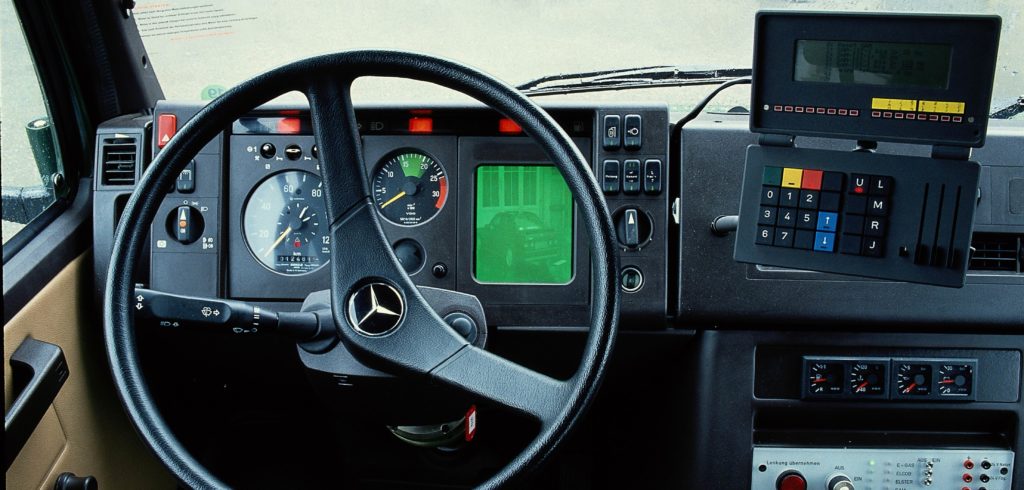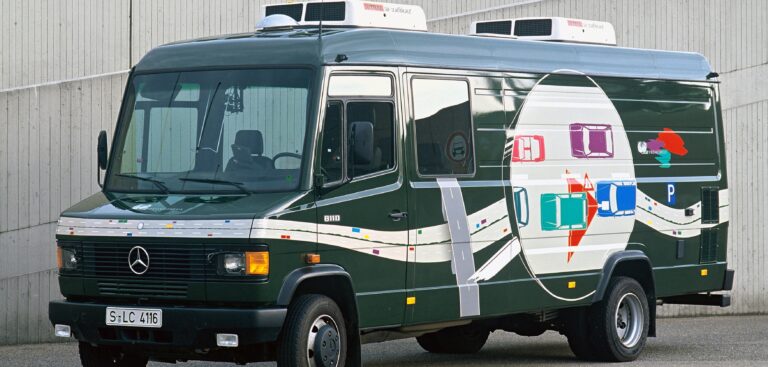The Prometheus project sounds like science fiction, and when it launched in 1986 it might as well have been, covering topics as forward thinking as autonomous driving, route guidance systems and V2X.
In 1995 the project culminated in an achievement that still sounds impressive today. A heavily automated Mercedes S-Class undertook the 1,758km (1,092 mile) journey from Munich, Germany, to Copenhagen, Denmark, and back, covering up to 158km (98 miles) at a time without human intervention. Along the route it hit speeds of more than 175km/h (109mph) and carried out its own overtaking maneuvers in real-world traffic, albeit under the supervision of a human driver.

The project was the work of the pan-European research organization Eureka, supported by car makers, automotive suppliers and academic organizations. A key figure in the partnership was Dr Ernst Dickmanns, a University of Munich professor who worked closely with Mercedes-Benz.
Dickmanns and his team began with a 5-ton Mercedes van with sensing techniques such as computer vision, then a revolutionary concept. Four cameras, with different focal lengths, were the main means of sensing the outside world.
Even now it’s not easy for a self-driving car to interpret video signals in real time. In 1986 the only solution was to simplify the task. Dickmanns’ response was to use a spatiotemporal model, which could estimate the location and velocity of objects and vehicles without storing previous frames. He also used saccadic vision – a concept whereby rapid movements of the camera are used to focus attention on significant features.
Despite these innovations, the processing power required was huge. The first vehicle used 60 transputers – high-performance microprocessors developed specifically for parallel computing – occupying much of the van’s load area. Subsequent versions were miniaturized into an S-Class, but it remained a bulky and expensive system.
“One of the biggest changes since Prometheus is the amount of computing power available,” says Dr Fridtjof Stein, a senior researcher at Daimler’s advanced engineering group and a project veteran. “In 1994 we filled a trunk full of computation power and it cost a fortune. Nowadays the same power is matchbox-sized and affordable to all.”
The project produced the first truly self-driving cars. They were able to monitor up to six other vehicles at a time and adapt to their environment, whereas most previous projects had simply followed cables embedded in the road. It was a pivotal moment in AV development, explains Stein: “Before this project the focus of research was what happens between the tire and the road. This was the first time we addressed what happens between the car, the infrastructure and other traffic.”
Within Daimler, the project’s findings had a direct impact on numerous ADAS features, including ICC, LDW and AEB systems. But the legacy stretches further. “Prometheus triggered a lot of international research, resulting in the next round of AV development, such as the DARPA Grand Challenge events in the USA,” says Stein. “It was also the first time that assisted and autonomous driving really appeared in the press.”
AVs have progressed hugely since. But another lesson is the importance of thinking big and laying the groundwork for future endeavors. Wherever the next 30 years take us, the industry will still look back on that day in 1986 as a defining moment.


